Lady Slipper Orchids (Cypripedium, Paphiopedilum, Phragmipedium, etc.)
The Lady Slipper orchids are all members of the orchid subfamily Cypripedioideae. If you hear someone talk about a "Lady Slipper," it is most likely that they are talking about a plant from the genus Cypripedium, particularly the Showy Lady's Slipper, Cypripedium reginae (which is also the state flower of Minnesota). They might also be talking about a Paphiopedilum, a Phragmipedium, or (less likely) Mexipedium or Selenipedium. Each genus within the subfamily is distantly related to the others; all are classified in their own tribes, except Paphiopedilum and Cypripedium, which are slightly less distant relatives and constitute the subtribe Cypripedieae. Intergeneric hybrids of Paphiopedilum and Phragmipedium are called Phragmipaphium. All Lady Slipper orchids have a pouch-shaped labellum. The idea is for pollinating insects to fall into the pouch and be unable to escape without climbing past the flower's column, where it either picks up pollinia or deposits them on the stigma of another flower, pollinating it. The slipper orchids also all have their two lateral sepals fused into a "synsepal," positioned behind the pouch. Each of the three main genera of Lady Slipper orchids has very different care requirements, so I'll talk about them separately.Cypripedium
These are temperate orchids, and usually grow terrestrially in bogs in the wild. If you want to grow them, I hope you live in a temperate climate! (Otherwise you'll have to get creative with the refrigerator to simulate a "winter" for a few months. Some people do that quite successfully, though!) It's possible to grow these in pots, but it's much more fun to put them in the garden, so that's what I'll talk about!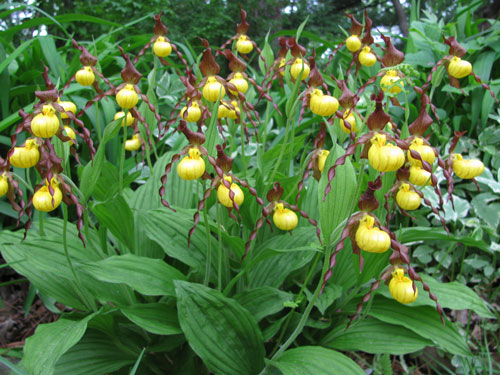
The Cyp. parviflorum in my backyard has 39 flowers this year!
Paphiopedilum
Paphiopedilums are Lady Slipper orchids native to southeast Asia. Some are terrestrial, others epiphytic. They do best with low lighting, such as that provided by an east window or a shaded south-facing window (in the northern hemisphere.) 1000 footcandles, similar to Phalaenopsis lighting, is more than enough. Plants with plain-colored leaves like a little more light than those with mottled leaves.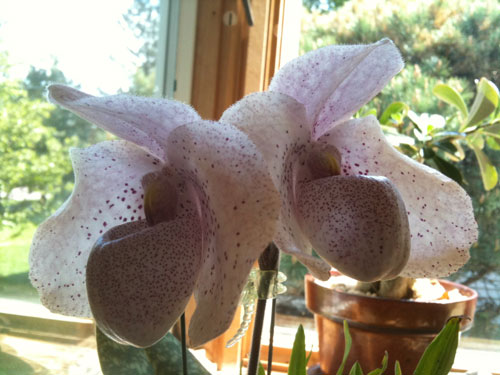
Phragmipedium
Phragmipediums come from South and Central America. Some, such as Phragmipedium besseae and Phragmipedium kovachii, are VERY brightly colored. They tend to come from very wet habitats, often at the edges of streams, and bloom most often in the spring.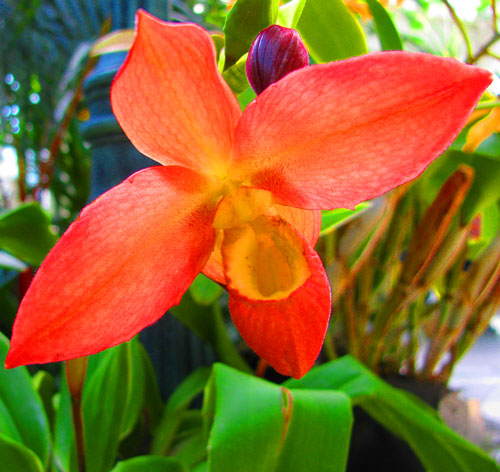
Selected Species
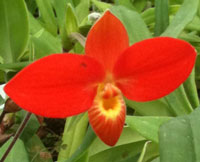
Phrag. besseae
Phrag. besseae is a beautiful red orchid (Phrag. besseae f. flavum is a yellow form of the species) with excellent color and shape. If I could have just one orchid, it would probably be this one.
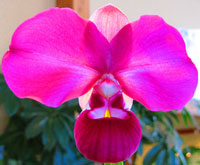
Phrag. kovachii
Phrag. kovachii, discovered in 2001, is the most remarkable new orchid of the last 100 years. The flowers of wild-type plants are 5-7 inches (14-18cm) across, by far the largest flowers in the genus.